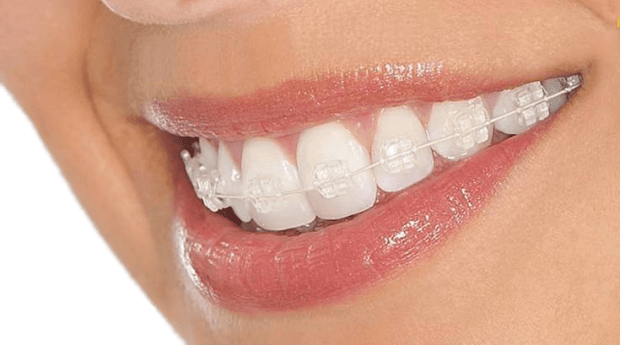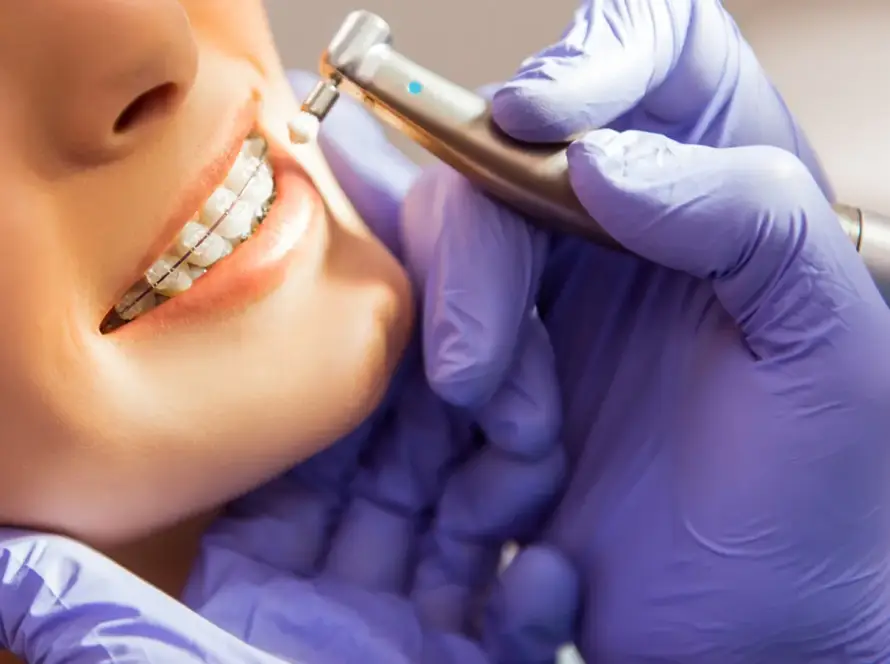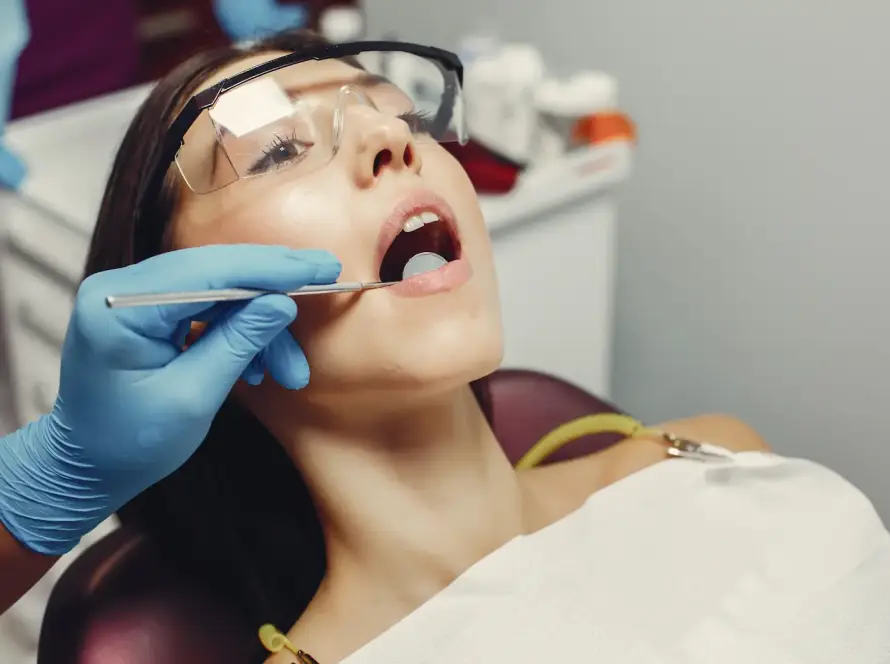Teeth whitening has become increasingly popular as people look to brighten their smiles. Among the many options available, teeth whitening strips and toothpaste are two of the most common. Each method has its own set of advantages and disadvantages that are important to consider. This article aims to provide an objective comparison to help individuals make an informed decision.
Whitening strips and whitening toothpaste function differently. Whitening strips are thin, flexible pieces coated with a hydrogen peroxide based gel. Users apply these directly to their teeth, allowing the peroxide to break down stains. Whitening toothpaste, on the other hand, often contains mild abrasives along with chemical agents designed to remove surface stains during the brushing process.
The effectiveness of these methods can depend on several factors, including the nature of the stains and the individual’s oral health. While teeth whitening strips are often praised for their noticeable results in a short period, they can sometimes cause increased sensitivity and irritation to the gums. Whitening toothpaste may be gentler, but its results can be less dramatic and time consuming to achieve.
When considering affordability, prices for both whitening strips and toothpaste can vary widely based on brand and efficacy. Strips are generally more expensive but can offer a more immediate whitening effect. Toothpaste, being part of a daily routine, is typically more cost-effective over the long term.
Safety is another critical factor. Both methods are generally safe when used as directed, but misuse can lead to issues such as tooth enamel erosion or gum irritation. Consulting a dentist before starting any whitening regimen is advisable, especially for those with existing dental issues or concerns.
Furthermore, it is important to understand the commitment each method requires. Whitening strips often need to be used daily for a period of two weeks, with results lasting several months. Whitening toothpaste, being part of a daily oral hygiene routine, may take longer to show results but also helps in maintaining them over a longer period.
Understanding Teeth Whitening
Teeth whitening is a cosmetic dental procedure designed to lighten the color of teeth and remove stains and discoloration. It is one of the most popular aesthetic dentistry treatments because it can greatly improve how teeth look.
Common Causes of Tooth Discoloration
Teeth can become discolored due to various reasons, including:
- Consumption of Staining Substances: Beverages like tea, coffee, and red wine are known to stain teeth. Foods such as berries and sauces can also contribute to discoloration.
- Tobacco Use: Smoking or chewing tobacco can deposit stains onto the teeth.
- Poor Dental Hygiene: Inadequate brushing and flossing can allow plaque and stains to build up on teeth.
- Aging: The outer layer of enamel on teeth gets worn away over time, revealing the yellowish dentin beneath.
- Medications: Certain medications, especially antibiotics such as tetracycline, can stain teeth. Some antihistamines and blood pressure drugs may also contribute to tooth discoloration.
- Dental Trauma: Injuries to the teeth can result in a change of color if the dentin becomes damaged.
Mechanism of Teeth Whitening
Teeth whitening treatments typically use one of two main active ingredients:
- Hydrogen Peroxide: A common bleaching agent that penetrates the tooth enamel to reach discolored molecules. The oxygen molecules from the peroxide break apart the chemical bonds of these stains, leading to a brighter tooth appearance.
- Carbamide Peroxide: This ingredient breaks down into hydrogen peroxide and urea, offering a slower but equally effective whitening process.
Types of Whitening Solutions
There are several methods and products available for teeth whitening, including:
- In-Office Whitening: Performed by dental professionals, this method utilizes higher concentrations of bleaching agents and can lead to significantly whiter teeth in a shorter time.
- At-Home Whitening Kits: These include custom-made trays and professional-grade whitening gels prescribed by dentists for home use.
- Over-The-Counter Products:
- Teeth Whitening Strips: Flexible plastic strips coated with a layer of hydrogen peroxide or carbamide peroxide gel. These are applied directly to the teeth for a prescribed duration.
- Whitening Toothpaste: Specially formulated toothpaste that includes mild abrasives and low concentrations of bleaching agents to remove surface stains.
Understanding the different causes of tooth discoloration, the mechanisms behind whitening, and the various available solutions is critical for making an informed decision about which whitening method best suits individual needs.
How Strips for Teeth Whitening Work
Teeth whitening strips are thin, flexible layers coated with a peroxide-based whitening gel. These strips are designed to mold to the shape of one’s teeth, ensuring that the whitening agents adhere closely to the enamel for an effective treatment.
- Active Ingredients:
- Hydrogen Peroxide
- Carbamide Peroxide
- Application Process:
- Clean teeth before application to enhance contact between the strips and enamel.
- Peel the strip from its backing.
- Carefully apply the strip to the surface of the teeth, pressing it into place.
- Duration of Use:
- Generally, users are advised to wear the strips for 30 minutes per session.
- The application period can vary based on the product’s formulation.
- Mechanism of Action:
- The peroxide gel breaks down into oxygen molecules.
- These molecules penetrate the enamel to reach discolored molecules.
- The discoloration is broken down, making the teeth appear whiter.
- Frequency:
- Daily use for consecutive days, usually ranging from 7 to 14 days.
- Some high-intensity treatments may call for twice-a-day applications.
- Considerations:
- Users with sensitive teeth should start with lower peroxide concentrations.
- Overuse can cause enamel damage or increased tooth sensitivity.
- Follow manufacturer guidelines rigorously to avoid adverse effects.
- Comparison with Professional Treatments:
- Less expensive than professional whitening.
- Mild to moderate effectiveness compared to professional options.
- Offers convenience for at-home use.
Overall, whitening strips provide a practical, over-the-counter solution that utilizes peroxide to achieve noticeable whitening results within a couple of weeks.
Mechanism of Action: Teeth Whitening Strips
Teeth whitening strips are designed to adhere directly to the teeth, delivering active ingredients that penetrate the enamel to remove stains. Understanding their mechanism of action involves several key components and steps:
- Composition of Whitening Strips:
- Whitening strips are typically made of a flexible plastic, such as polyethylene.
- They are coated with a thin layer of peroxide-based gel, which is the primary bleaching agent.
- Adhesion to Teeth:
- The strips are designed to mold to the shape of the teeth, ensuring close contact with the enamel.
- Adhesives within the strips help them stay in place for the duration of the application.
- Peroxide Gel Activation:
- The peroxide in the gel, often hydrogen peroxide or carbamide peroxide, begins to break down once exposed to the moisture and heat of the mouth.
- This chemical breakdown releases oxygen molecules, which are crucial for the whitening process.
- Oxygen Molecule Action:
- The released oxygen molecules penetrate the enamel and dentin layers of the teeth.
- They interact with the stain molecules, breaking the bonds that hold them together. This process effectively lightens the color of the stains.
- Duration and Usage:
- Whitening strips are typically applied for 20-30 minutes per session.
- The frequency and length of use can vary depending on the concentration of peroxide and the desired whitening results.
- Efficiency and Limitations:
- These strips are effective at removing both surface stains and deeper discolorations.
- They may not reach the crevices between teeth as effectively as other whitening methods.
- Post-Application Effects:
- After the application period, the strips are removed and any residual gel is rinsed away.
- Users may experience temporary tooth sensitivity or gum irritation.
- Consistency and Maintenance:
- Continuous use over a specified duration ensures optimal results.
- Maintenance treatments every few months can help sustain whitened teeth.
Teeth whitening strips utilize peroxide-based gels, ensuring an effective whitening process while being user-friendly. They offer a straightforward approach to achieving whiter teeth, with professional and home-use options available on the market.
Pros and Cons of Teeth Whitening Strips
Pros
- Ease of Use
- Teeth whitening strips are straightforward to apply. Users follow simple instructions, often with adhesive strips that conform to the teeth easily.
- Accessibility
- These strips are widely available over-the-counter at pharmacies and stores, making them highly accessible for most people.
- Effectiveness
- Whitening strips can be quite effective in removing surface stains and achieving noticeable results within a few weeks of consistent use.
- Time Efficiency
- Use of whitening strips does not require long visits to a dentist. Most strips are designed for application times ranging from 10 to 30 minutes per day.
- Cost-Effective
- Compared to professional dental treatments, teeth whitening strips are considerably more affordable, providing a cost-effective alternative for achieving a whiter smile.
Cons
- Potential for Uneven Whitening
- Strips may not cover all areas of the teeth evenly, leading to patchy results. This can be an issue especially if the strips do not mold closely to the teeth.
- Gum Sensitivity
- Some users may experience gum irritation or increased tooth sensitivity. This is often due to the peroxide used in the strips coming into contact with the gums.
- Short-Term Results
- The whitening effects achieved with strips may not be as long-lasting as those obtained through professional whitening treatments. Regular maintenance may be required.
- Limitations on Stain Types
- Teeth whitening strips are typically effective against surface stains but may not address deeper discoloration caused by intrinsic factors.
- Adherence to Schedule
- Consistency is key for optimal results, necessitating daily or regular application. Users might find it challenging to adhere to the recommended schedule consistently.
How Whitening Toothpaste Works
Whitening toothpaste is a popular choice for individuals looking to achieve a brighter smile through routine oral care. These toothpastes contain specific ingredients engineered to effectively remove surface stains and improve overall tooth color.
Key Ingredients
- Abrasives: Whitening toothpastes often include mild abrasives such as hydrated silica, calcium carbonate, or dicalcium phosphate. These substances help to scrub away surface stains caused by food, drinks, and tobacco.
- Chemical Agents: Some whitening toothpastes incorporate chemical agents like hydrogen peroxide or carbamide peroxide. These compounds can penetrate the enamel to break down stains at a molecular level, enhancing the whitening effect.
- Enzymes: Certain formulations utilize enzymes like papain and bromelain from papaya and pineapple, respectively. These enzymes aid in dissolving the protein pellicle layer on teeth, which is often laden with discoloration.
Mechanism of Action
- Mechanical Abrasion: The abrasives in whitening toothpastes physically scrub the teeth, removing plaque and surface stains. This process can enhance the appearance of teeth by eliminating minor extrinsic discolorations.
- Chemical Cleaning: Chemical agents within these toothpastes work by breaking down chromogens—colored compounds responsible for staining. When these agents react with stains, they convert the chromogens into smaller, colorless molecules that are easier to brush away.
Daily Use
Unlike other whitening treatments that require specific application periods, whitening toothpaste is designed for daily use. Its continued, regular application ensures that surface stains are consistently tackled, maintaining a cleaner, brighter smile.
- Frequency: Dentists typically recommend brushing with whitening toothpaste at least twice a day, in line with standard oral care practices.
- Safety Considerations: While most whitening toothpastes are safe for everyday use, overuse of highly abrasive formulations can potentially wear down enamel, leading to increased tooth sensitivity.
Therefore, it’s important to select a product with a balance of effective yet gentle ingredients to safeguard dental health while achieving aesthetic goals.
Mechanism of Action: Whitening Toothpaste
Whitening toothpaste primarily functions through an abrasive and chemical process, differing from traditional toothpaste in several significant ways:
- Abrasive Agents:
- Whitening toothpaste contains mild abrasives, such as silica or calcium carbonate. These abrasives help to physically remove surface stains from teeth caused by coffee, tea, tobacco, and food.
- The abrasives work by gently polishing the enamel, leading to a brighter appearance.
- Chemical Agents:
- Whitening toothpaste commonly incorporates chemical agents like hydrogen peroxide or carbamide peroxide. These chemicals penetrate the enamel and work to break down the chromogens, which are pigmented molecules that cause discoloration.
- The peroxide-based compounds release oxygen molecules that react with the stain molecules, transforming them into colorless substances.
- Enzyme-Based Whitening:
- Some formulations include enzymes like papain and bromelain which break down proteins in stains, facilitating their removal.
- These enzymes target organic stains without affecting the enamel’s structural integrity.
- Optical Brighteners:
- The inclusion of blue covarine, a dye, imparts an immediate whitening effect by adhering to the enamel surface. This creates an optical illusion by making teeth appear less yellow.
- Blue covarine alters how light is reflected off the teeth, enhancing their whiteness perceptibly after just one brush.
- Fluoride Content:
- Many whitening toothpastes maintain fluoride to aid in remineralization and offer protection against cavities.
- Fluoride strengthens enamel, counteracting potential abrasiveness of whitening agents, thus preserving overall dental health.
Pros and Cons of Whitening Toothpaste
Pros
- Convenience: Whitening toothpaste is easy to incorporate into daily routines. Users can brush their teeth as usual without adding extra steps.
- Cost-Effective: Typically, whitening toothpaste is less expensive compared to other whitening treatments such as strips, gels, or professional services.
- General Oral Health: In addition to whitening, these toothpastes often contain fluoride and other ingredients that help prevent cavities and improve overall oral hygiene.
- Accessibility: Readily available at most supermarkets, pharmacies, and online stores without needing a prescription or professional consultation.
- Gradual Whitening: Provides a gradual whitening process which can be preferable for those concerned about the sudden changes in teeth coloration.
Cons
- Limited Effectiveness: Whitening toothpaste generally works by removing surface stains and may not change the natural color of teeth or deal with deeper stains.
- Potential Abrasiveness: Some whitening toothpastes contain abrasive elements that can potentially wear down enamel over time, which may lead to tooth sensitivity.
- Slower Results: Results can take several weeks to months to be noticeable, which may not be ideal for those seeking quick improvement.
- Maintenance Required: Users must consistently use the product to maintain the whitening effect, discontinuation may lead to the return of stains.
- Ingredient Sensitivity: Certain ingredients in whitening toothpaste may cause irritation or allergic reactions in some users.
Considerations
- Daily Use Limits: It is important to note the recommended daily use and not overuse the product to avoid damaging enamel.
- Consultation Advisable: Consulting with a dental professional can provide guidance on the best type of whitening toothpaste based on individual needs and oral health condition.
- Combination with Other Treatments: For more significant results, whitening toothpaste might be used in conjunction with other whitening methods, after consulting with a dentist.
Side Effects and Safety Concerns
Teeth Whitening Strips
Teeth whitening strips contain peroxide-based chemicals like hydrogen peroxide or carbamide peroxide that can cause several side effects. Users may experience:
- Tooth Sensitivity: Strips may make teeth more sensitive to hot, cold, or sweet substances.
- Gum Irritation: Peroxide can irritate the gums, causing redness and discomfort.
- Enamel Erosion: Prolonged use can weaken enamel, leading to further dental issues.
Using whitening strips in moderation is essential. Overuse can exacerbate existing dental problems.
Teeth Whitening Toothpaste
Teeth whitening toothpaste typically contains mild abrasives and chemical agents. Possible side effects include:
- Mild Abrasion: Abrasive agents can erode enamel when used excessively.
- Increased Sensitivity: Some ingredients can increase tooth sensitivity over time.
- Ineffectiveness: Whitening toothpastes may be less effective in removing deep stains compared to other methods.
Regular and appropriate use, guided by a dental professional, minimizes these risks.
General Safety Recommendations
For those considering either teeth whitening method, adhering to the following guidelines can enhance safety:
- Consult a Dentist: Professional advice ensures suitability for individual dental health.
- Follow Instructions: Adhering to product guidelines mitigates adverse effects.
- Monitor for Adverse Effects: Immediate discontinuation upon experiencing discomfort prevents long-term damage.
- Limit Usage: Periodic usage reduces the risk of enamel erosion and sensitivity.
- Maintain Oral Hygiene: Regular brushing, flossing, and dental check-ups ensure overall dental health.
Special Precautions
Special care should be taken by:
- Pregnant or Nursing Women: Avoid teeth whitening products, as the effects on infants and fetuses are not well studied.
- Individuals with Dental Issues: Those with cavities, gum disease, or exposed roots should avoid whitening products unless recommended by a dentist.
Products to Avoid
Certain products should be avoided due to potential harm:
- High-Concentration Strips: Products with high peroxide concentrations can cause severe irritation and damage.
- Non-Approved Brands: Using products not approved by dental associations may pose risks.
Using teeth whitening products safely involves a careful balance between achieving desired results and maintaining dental health. Always prioritize professional guidance and moderation.
Comparative Analysis: Strips vs. Toothpaste
Efficacy
Teeth whitening strips typically contain higher concentrations of active whitening ingredients, such as hydrogen peroxide, compared to whitening toothpaste. Strips are designed to adhere to teeth, allowing the whitening agent to remain in contact with the enamel for an extended period, which can result in more noticeable whitening effects. Whitening toothpaste, on the other hand, often relies on mild abrasives and lower concentrations of active ingredients, providing gradual whitening over time.
Application Process
- Strips:
- Users must peel the backing off each strip and apply directly to the teeth.
- Strips adhere to teeth for a specified duration, usually between 15 to 30 minutes.
- The process requires a commitment to staying relatively still during application to avoid dislodging.
- Toothpaste:
- Application is straightforward—used just like regular toothpaste.
- Requires brushing twice daily, as part of the normal oral hygiene routine.
- No additional steps or time commitments are necessary beyond regular brushing.
Safety and Side Effects
There is a potential for increased tooth sensitivity and gum irritation with both strips and toothpaste. However, the intensity and likelihood of side effects can differ:
- Strips:
- May lead to higher incidents of tooth sensitivity due to concentrations of whitening agents.
- Improper use or overuse can exacerbate enamel erosion or gum irritation.
- Toothpaste:
- Typically milder, reducing the risk of significant sensitivity or irritation.
- Overuse of abrasive whitening toothpaste can potentially wear down enamel over time.
Cost Considerations
- Strips:
- Generally more expensive upfront due to higher concentrations of whitening agents and specialized packaging.
- Costs vary widely based on the brand and the number of treatments included in a package.
- Toothpaste:
- Relatively inexpensive compared to strips.
- Provides continuous usage, making it cost-effective over a longer period.
Results and Maintenance
- Strips:
- Results can be observed within a few days to weeks, depending on usage.
- Requires periodic treatments to maintain whiteness.
- Toothpaste:
- Gradual and subtle whitening, noticeable over extended use.
- Helps maintain results achieved by strips or other whitening treatments.
Convenience
- Strips:
- Less convenient due to the need for dedicated application time.
- Requires carrying individual strips when traveling or on-the-go.
- Toothpaste:
- Convenient and integrates seamlessly into existing daily oral hygiene routines.
- Easy to transport with no need for special preparations.
Product Range
- Strips:
- Available in varying strengths and treatment lengths.
- Some strips offer additional features like enamel protection or sensitivity reduction.
- Toothpaste:
- Widely available in numerous formulations, including those targeting sensitivity, plaque, and tartar control in addition to whitening.
What Dentists Recommend
When considering teeth whitening options, it’s crucial to weigh professional advice. Dentists, with their expertise, provide insights based on clinical evidence and patient experiences. Here’s a breakdown of their recommendations for both whitening strips and whitening toothpaste:
Whitening Strips
Dentists often recommend whitening strips for individuals looking for noticeable results relatively quickly. These strips typically contain peroxide, which effectively removes stains.
- Effectiveness: Dentists acknowledge that strips can achieve up to three shades whiter within a few weeks.
- Usage: They recommend using the strips as directed, usually once a day for 30 minutes.
- Suitability: Best for individuals with minor to moderate staining.
- Ease of Use: Strips are generally easy to apply, making them convenient for home use.
- Sensitive Teeth: For those with sensitive teeth, dentists suggest strips with a lower peroxide concentration or alternating days of use.
Whitening Toothpaste
Whitening toothpaste is another common recommendation, primarily for maintaining existing whiteness and preventing new stains.
- Effectiveness: Dentists observe that whitening toothpaste is less effective for dramatic changes but helps maintain the results from more intensive treatments.
- Abrasives: These pastes often contain mild abrasives to scrub away surface stains without damaging enamel.
- Frequency: Recommended for daily use, generally twice a day.
- Suitability: Ideal for individuals looking to prevent staining from coffee, tea, or smoking.
- Long-term Use: Dentists highlight the benefit of long-term use to sustain a brighter smile.
Combined Use
Many dentists also suggest a combined approach for optimal results.
- Initial Whitening: Use strips initially to achieve the desired level of whiteness.
- Maintenance: Follow up with whitening toothpaste to maintain the results.
Patient Considerations
Individual needs and dental history are paramount.
- Professional Consultation: Dentists underscore the importance of consulting a professional before starting any whitening regimen.
- Customized Recommendations: Treatment recommendations can vary based on the patient’s dental health, history of sensitivity, and lifestyle habits.
By considering these professional guidelines, individuals can make informed decisions about their teeth whitening routines.
User Testimonials and Experiences
Strips for Teeth Whitening
Users who have tried teeth whitening strips often report noticeable results within a few days of use.
- Consistency and Ease of Use: Many users appreciate the convenience of applying strips at home. According to user feedback, the process is straightforward and typically fits easily into a daily routine.
- Results: Users frequently mention the significant difference in tooth shade after consistent use. Some individuals report teeth appearing up to three shades whiter after a two-week period.
- Sensitivity Issues: A recurring theme in user experiences is increased tooth sensitivity following the use of whitening strips. Not all users face this issue, but it is common enough to be notable.
- Taste and Texture: Some users find the taste of the whitening agents on strips unpleasant, while others quickly adapt. The texture of the strips can also be a point of discomfort for a few users.
Toothpaste for Whitening
Tooth whitening toothpaste users generally report more subtle results over a longer period of use.
- Ease of Integration: Users value the ability to integrate whitening toothpaste into their regular brushing habits without adding extra steps to their routine.
- Gradual Whitening: Many users note that whitening toothpaste provides a gradual brightening effect, which some prefer over the more rapid results from strips.
- Sensitivity: Unlike strips, whitening toothpaste tends to cause less reported cases of tooth sensitivity. Users with sensitive teeth often prefer this method.
- Flavor and Texture: Users generally find that whitening toothpaste does not differ significantly in taste or texture from regular toothpaste. This makes the transition smoother for daily use.
Anecdotal Preferences
- Long-Term Users: Some long-term users of teeth whitening products show a preference towards strips for immediate results, especially before special occasions.
- Daily Routine: Conversely, individuals seeking gradual improvement without altering their daily habits tend to favor whitening toothpaste.
- Combination Use: A subset of users reports combining both methods for optimal results, utilizing strips for initial whitening followed by toothpaste to maintain the effect.
These testimonials highlight the varied experiences and preferences consumers have with teeth whitening strips and toothpaste, providing valuable insights into their effectiveness and user satisfaction.
Frequency and Duration of Use
The frequency and duration of use for teeth whitening methods can significantly impact their effectiveness and convenience.
Teeth Whitening Strips
Teeth whitening strips typically require more structured and consistent use. Users are usually instructed to apply the strips to their teeth for 30 minutes per session. Depending on the brand and the desired level of whitening, this can be performed:
- Daily: Many whitening strip regimens suggest daily application for a period ranging from one to two weeks. The consistent use maximizes the bleaching effect, offering noticeable results within the stipulated course.
- Twice Daily: Some products may recommend twice-daily applications to expedite the whitening process. This method involves adhering strictly to time intervals and ensuring no overlap in application.
- Maintenance: After completion of the initial regimen, maintenance sessions, typically once or twice a month, might be suggested to uphold the whitening results.
Whitening Toothpaste
Whitening toothpaste tends to offer more flexibility in usage frequency and duration. Designed for regular oral hygiene, its routine involves:
- Twice Daily: Brushing with whitening toothpaste is generally recommended twice a day, ensuring consistent exposure to the whitening agents. This practice ingrains it as part of daily oral care, promoting gradual bleaching without the need for additional effort.
- Long-term use: Unlike strips, whitening toothpaste is intended for continuous, long-term use. Brushing routines incorporate the toothpaste consistently, maintaining and slightly enhancing teeth whiteness over time.
Comparison Aspects
The distinction in usage frequency and duration is vital for individuals determining their preferred method based on lifestyle and convenience. Whitening strips demand specific, somewhat restrictive time commitments but offer quick, noticeable results. In contrast, whitening toothpaste integrates seamlessly into daily routines but requires prolonged application for significant effects. Evaluating these factors is crucial:
- Routine Integration: Whitening toothpaste’s integration into existing brushing habits can be more manageable for users averse to additional steps.
- Time Commitment: Strips require dedicated time slots, which may not suit those with demanding schedules.
Considerations
When choosing between teeth whitening strips and toothpaste, users should contemplate:
- Personal schedule and availability
- Commitment level to a prolonged routine
- Desired quickness of results
These elements inform the suitability of each method concerning lifestyle and teeth whitening goals.
Environmental Impact
When evaluating the environmental impact of teeth whitening strips versus toothpaste, several key factors need to be taken into consideration. This section analyzes the ecological footprint of both products, encompassing production, packaging, and disposal.
Production
- Ingredients:
- Teeth Whitening Strips: Commonly contain hydrogen peroxide or carbamide peroxide. The synthesis of these chemicals requires energy-intensive industrial processes, potentially contributing to greenhouse gas emissions.
- Toothpaste: Typically consists of abrasives, fluoride, and detergents. While some ingredients, like silica and calcium carbonate, are mined, others are sourced from petrochemicals, further impacting the environment.
- Manufacturing:
- Teeth Whitening Strips: The manufacturing process involves creating the plastic film and impregnating it with the active ingredient, often resulting in higher energy consumption.
- Toothpaste: Usually manufactured in bulk, which can be more energy-efficient compared to the production of individually packaged strips.
Packaging
- Material Usage:
- Teeth Whitening Strips: Each strip is individually wrapped in plastic or foil packages, leading to significant plastic waste.
- Toothpaste: Most toothpaste tubes are made from a combination of plastic and aluminum, which are challenging to recycle.
- Reusability and Recycling:
- Teeth Whitening Strips: Typically not reusable and create substantial non-recyclable waste. Even the outer plastic cartons add to the landfill burden.
- Toothpaste: Some brands offer recyclable or refillable packaging. However, the majority of toothpaste tubes still end up in landfills.
Disposal
- Waste Contribution:
- Teeth Whitening Strips: Post-use, they generate single-use waste. As they are often mixed with chemicals, they may pose additional risks if not disposed of properly.
- Toothpaste: While the tubes contribute to landfill mass, some formulations now include biodegradable ingredients, lessening their long-term environmental impact.
- Biodegradability:
- Teeth Whitening Strips: Typically composed of non-biodegradable plastics, leading to persistent environmental pollutants.
- Toothpaste: Increasingly available in biodegradable formulas, though the standard tubes are not compostable.
Carbon Footprint
- Teeth Whitening Strips: Given the need for chemical synthesis, packaging, and individualized wrapping, they tend to have a higher carbon footprint.
- Toothpaste: If chosen wisely from environmentally-conscious brands, toothpaste can offer a reduced carbon footprint, particularly those opting for minimalist, eco-friendly packaging solutions.
Overall, the combined factors of production, packaging, and disposal suggest that toothpaste often results in a lower environmental impact compared to teeth whitening strips.
Conclusion
When deciding between teeth whitening strips and toothpaste, various factors must be considered to make an informed choice suitable for one’s specific needs.
Whitening Strips
- Effectiveness: Whitening strips generally offer a higher degree of whitening compared to toothpaste. They can provide noticeable results within a few days to weeks.
- Active Ingredients: Commonly contain hydrogen peroxide or carbamide peroxide, which penetrate the enamel to remove deeper stains.
- Application: Usually require daily application for a specified duration, ranging from 10 minutes to an hour, depending on the product.
- Cost: Tend to be more expensive than toothpaste. However, they often deliver quicker and more significant results.
- Side Effects: Can cause temporary sensitivity or irritation to gums if not used correctly.
Whitening Toothpaste
- Effectiveness: Whitening toothpaste is less effective for deep stains, working better for surface-level discolorations.
- Active Ingredients: Often contain mild abrasives, fluoride, and in some cases, low concentrations of hydrogen peroxide.
- Application: Used as part of daily oral hygiene routines, making it a convenient option for continuous, gradual whitening.
- Cost: Generally more affordable and readily available compared to whitening strips.
- Side Effects: Typically fewer side effects, though prolonged use of highly abrasive toothpaste can wear down enamel.
Professional Recommendations
- Consult a Dentist: It is advisable to consult a dental professional before starting any whitening treatment. They can recommend the most suitable option based on individual dental health and whitening goals.
- Consider Oral Health: Factors such as existing dental work, tooth sensitivity, and gum health should influence the decision making process.
- Maintenance: Regardless of the chosen method, maintaining good oral hygiene practices is essential for lasting results. This includes regular brushing, flossing, and dental check-ups.
In summary, both whitening strips and toothpaste have their unique advantages and potential downsides. The choice ultimately depends on personal preferences, budget, and specific dental conditions. Consulting with a dental professional can provide tailored advice, ensuring an informed and effective approach to achieving a brighter smile.















